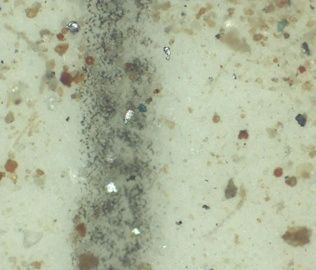
Lubricants and hydraulic oil have to go a long way to make it into your system, which means there's a high potential for it to pick up particulate and water at every step along the way.
Around here at Hy-Pro, we cringe when we think about that process and how our customers put that oil into their machines. We want you to be aware of the state of the oil that you're using, so let's take a look at three reasons why new oil does not mean CLEAN oil.
Reason #1: Oil manufacturing facilities are not known for white glove cleanliness.
Let's be real, oil is manufactured in a dirty environment. How could a facility that manufactures oil be immaculate? It's simply not possible to manufacture a contaminant-free fluid. After making the oil, the manufacturer must store it somewhere. Their options are bulk storage tanks or drums. Those should work well, right? Well, keep reading.
Reason #2: Storing the dirty oil in a drum or a bulk storage tank with other dirty oil isn't going to help the ISO code.
What if the oil going into the bulk storage tank is a different temperature than the oil already residing there? Most of these tanks are not properly sealed, and the temperature change will draw in air contaminated with moisture and dirt. As the oil sits, the particulate and water will settle to the bottom. When your oil was being pumped from the tank, did they give you oil from the top or the bottom?
Even a brand new oil drum will have particulate contamination in it. Specs of dirt smaller than our eyes can detect will wreak havoc on valves and other components. How could we expect the drum manufacturer to provide a completely clean new drum? If the drum was previously used, how well was it cleaned before being reused to store your oil?
Furthermore, if the drum is not stored in a highly controlled environment the constant changes in temperature will draw in air contaminated with moisture and dirt. As the oil sits, the particulate and water will settle to the bottom of the drum, forming tank deposits that could decimate your components.
Now that the oil has picked up contaminates from the manufacturing facility, the oil must be sent to an oil distributor. The options at this stage are drums or tanker trucks.
Reason #3: Drums and tanker trunks = petrie dishes for dirty fluids.
When’s the last time you climbed into a tanker to inspect it for cleanliness before it was used to transport your oil? These tankers are used over and over again to transport dirty fluids. Even if your oil was filtered during the previous transfers (which is highly unlikely, by the way), now it’s being put into a tank with contamination leftover from yesterday’s unfiltered haul.
In the event your manufacturer shipped your oil to the distributor in drums, it will now be traveling in an uncontrolled environment and will draw in contaminated air as the oil heats and cools.







